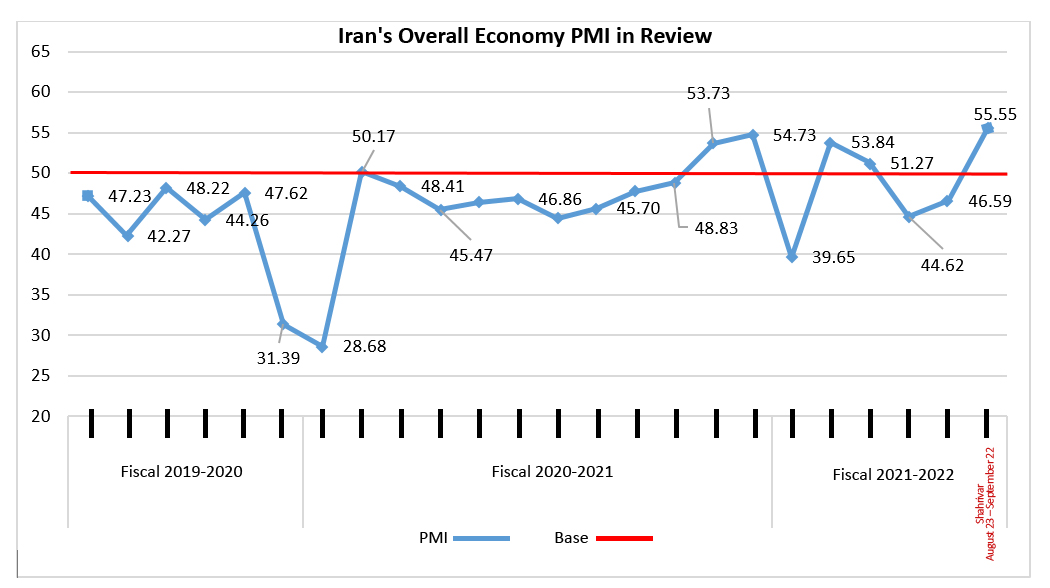Iran’s new PMI data for the fiscal month of Shahrivar (August 23 – September 22), released by the Iran Chamber of Commerce shows that most businesses have begun to recover from the severe recession of the past two months caused by COVID-19 restrictions.
The Purchasing Managers’ Index, known by its Farsi acronym Shamekh, for Iran’s overall economy has significantly grown from 46.59 in the previous month to settle at 55.55 in Shahrivar.
The Statistics and Economic Analysis Center of Iran Chamber of Commerce, Industries, Mines and Agriculture, the sponsor and coordinator of the survey, announces the whole economy PMI data in a report every month.
The headline PMI is a number from 0 to 100, such that over 50 shows an expansion of the economy when compared with the previous month. A PMI reading under 50 indicates contraction and a reading of 50 implies no change.
PMI is an index of the prevailing direction of economic trends, aiming to provide information about business conditions to company directors, analysts and purchasing managers.

Click on the image for better view
The survey in Mordad indicated that all the main sub-indexes including services, agriculture, and industry – except for the housing sector – had a PMI reading above 50.
However, the statistics show that the purchase price of raw materials and supplies needed for production continue to grow and the price slope of products and services increases sharply, which can bring new challenges for production and the market.
The sub-index of “business activities” rallies to 57.64 in Shahrivar, the highest in the past four months, after it declined for two consecutive months.
The “new order” sub-index (57.43) also grew in the month to reach its highest levels since the survey plan began two years ago.
The increase in this index, which includes the industry, services and agriculture sectors, has been mostly affected by the situation after the severe recession of the two months ago and less hesitation in customers' decision-making.
The "supplier deliveries" sub-index, which measures how fast deliveries are made, increased from 54.37 in the month ending in August 22 to 54.51 in Shahrivar (ending in September 22).
The report also suggests that the sub-index for “raw material inventory” (52.03) continued to grow in the fiscal month of Shahrivar.
The PMI reading of "employment" sub-index was also above the threshold last month. It improved from 52.23 in the fiscal month o Mordad (ending in August 22) to 52.65 in Shahrivar.
In general, according to the survey of economic actors in September, the Purchasing Managers' Index came out of the severe recession of the past two months, and most businesses resumed their activities after the lockdowns due to the fifth peak of COVID-19 in the country.
However, the economic activists say that they continue to face many problems, including a sharp rise in prices of raw materials and the supplies needed for production, severe liquidity shortages, severe forex rate instability, and declining customer demand.